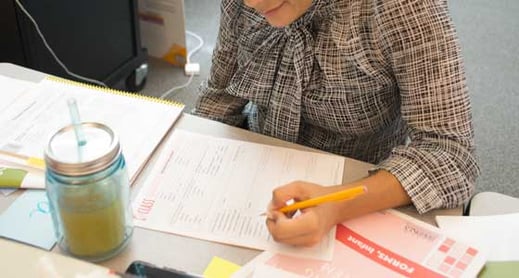
As Teachstone’s Production Specialist, I watch a lot of classroom videos to select coding segments for Teachstone’s reliability testing, calibrations, and training materials. It’s rare for me to have the opportunity to do live observation in classrooms, but recently I spent time observing classrooms and thought about the differences between the live- and video-coding experience.
Benefits to Coding Video
Coding video is in many ways a simpler version of the live-coding experience. In most coding segments, only a portion of the classroom is on camera. Because it’s important to code only the teacher-child interactions you see on screen, the camera essentially tells you which interactions to take notes, which is especially helpful when you're weighing evidence in classrooms with multiple teachers. When coding video, you typically hear fewer interactions than you can when live coding. This limits the pieces of evidence you can consider, but also makes it particularly important to notice every interaction you can see.
Benefits to Coding a Live Classroom
As a live observer, you benefit from a holistic view of the classroom. You can see and hear everything, move to follow the action around the classroom, and make choices about how to focus your attention. Because the start of a 20-minute coding cycle generally does not align with the start of a classroom activity (as is often the case in coding segments), live coders often have to balance more complex combinations of activities when coding.
Since there is so much evidence to record for each dimension, I generally find that I am more confident in the codes I choose as a live observer than when coding video. I also find it easier to code the Emotional Support dimensions live. In the classroom, you can feel the level of warmth and connection in addition to observing specific behaviors related to Positive Climate. Being able to deftly shift your vantage point makes it easier to pick up on children’s cues and gauge the extent to which teachers are aware of and responsive to those signals.
Challenges to Coding a Live Classroom
While CLASS observers coding in the classroom have a lot of evidence to lean on, they also face unique distractions. Video coders never have to worry that children will walk through their computer screens and try to play, but children often try to interact with live observers. When you are observing live, you can also feel the impact you are having on classroom activities. While observers should certainly not be in the way of classroom activities, it is generally necessary to be close to the action to hear what children are saying.
When live coding, I also have to be more attuned to my own emotions in order to code reliably. While I find it fairly easy to stay objective when coding video, I have to be more cautious in the classroom. If teachers are nervous about being observed, you can perceive that. Because live coders interact with teachers and center staff before the observation begins, they also tend to develop personal opinions about the teachers and the center prior to coding. In order to use the CLASS tool accurately, it is vital that coders do not allow their coding to be influenced by these initial impressions.
What sorts of pros and cons have you noticed when observing videos or in classrooms? How do you overcome the unique challenges of each type of CLASS observation? We’d love to hear your thoughts in the comments below.

